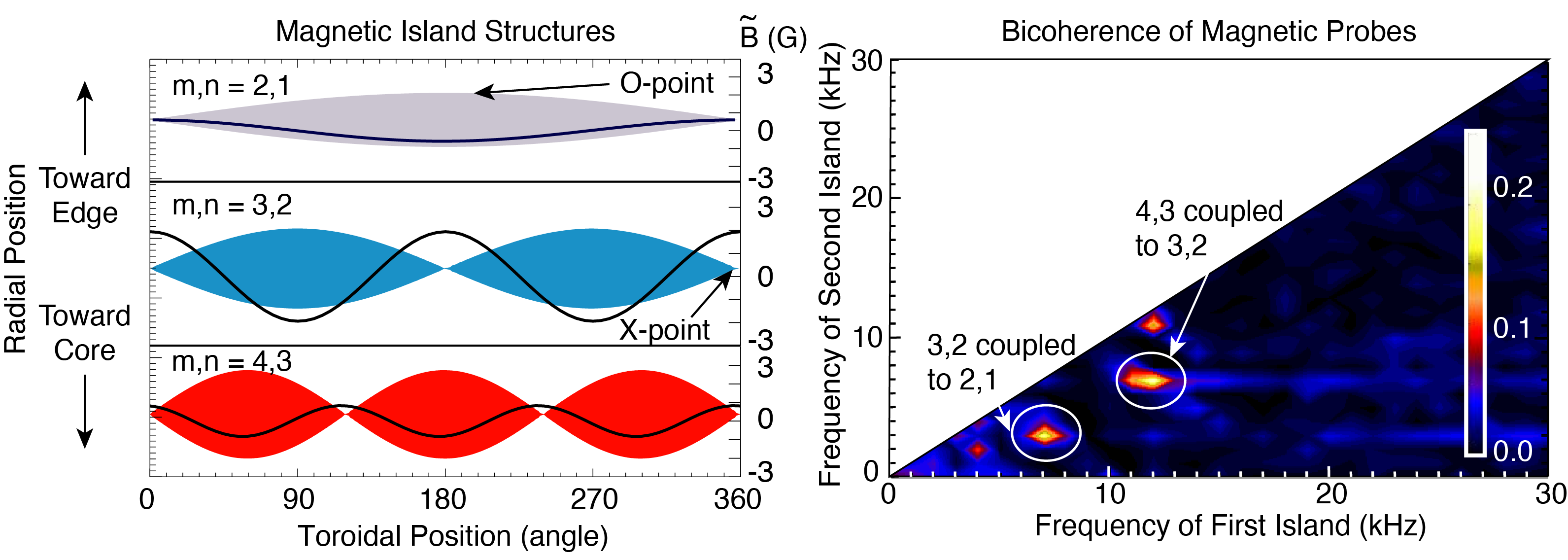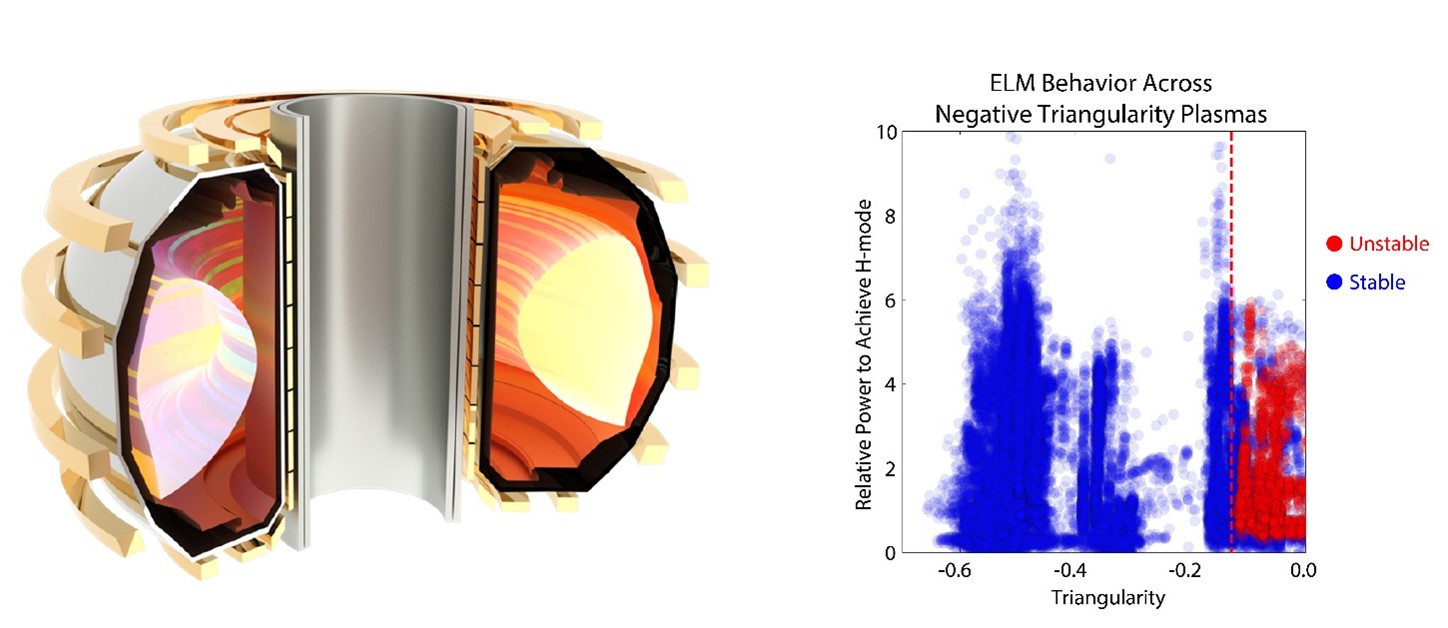Islands That Move Together, Disrupt Together
Small rotating magnetic islands in tokamaks flowing at the same speed can couple together to cause disruptive islands that reduce plasma confinement.

The Science
Tokamaks employ a magnetic field to achieve plasma confinement suitable for fusion energy. The hot plasma generates instabilities, however, and some of those instabilities can change the magnetic field in a way that reduces confinement. Researchers call one of these changes “tearing,” because it involves the magnetic field tearing open and then reconnecting in a way that allows plasma particles to escape. During the reconnection process, the magnetic field forms islands. These islands typically result in the loss of some particles but do not otherwise affect the plasma. The outermost islands, closer to the device wall, can expel so much particle energy that the entire plasma confinement is lost, which is called a disruption. Experiments at the DIII-D National Fusion Facility showed that harmless islands closer to the core of the plasma can produce small islands in the edge plasma that grow into disruption-producing islands.The Impact
This research provides a clear picture of the processes behind the growth of disruptive islands in a plasma scenario expected for future reactors. Fusion energy tokamak reactors are likely to feature plasmas that have more rigid rotation than today’s experimental facilities. This rigid rotation will lead to conditions whereby magnetic islands at different locations rotate at the same speed, increasing the likelihood that otherwise harmless islands can transfer energy and thus cause growth of disruptive islands. For the large ITER device, now under construction in France, this research suggests that controlling or suppressing non-disruptive islands is important to prevent the growth of disruptive islands. This could be accomplished in multiple ways. For example, researchers could develop torque actuators that increase the rotational speed of the more accessible outer islands. This would help prevent those islands from coupling to other islands.Summary
Experiments performed with the DIII-D tokamak demonstrate that magnetic islands exchange energy, or couple, to each other when they rotate at similar speeds. In some cases, an otherwise harmless magnetic island can transfer energy to a disruptive island that then causes a sudden loss of plasma confinement. For future tokamaks such as ITER, this work indicates that ensuring a speed mismatch between islands at different radial locations will reduce the likelihood of a disruptive island growing. The concept of multi-wave coupling is ubiquitous in physics and is relevant to many non-linear systems such as optics, plasma turbulence, and quantum mechanics.Contact
Laszlo BardocziGeneral Atomics
bardoczil@fusion.gat.com
Funding
This material is based upon work supported by the U.S. Department of Energy Office of Science, Office of Fusion Energy Sciences, using the DIII-D National Fusion Facility, a DOE Office of Science user facility, under Award(s) DE-FC02-04ER54698.Publications
Bardoczi, L., Logan, N.C., and Strait, E.J., Neoclassical Tearing Mode Seeding by Nonlinear Three-Wave Interactions in Tokamaks. Physical Review Letters 127, 055002 (2021). [DOI: 10.1103/PhysRevLett.127.055002]Highlight Categories
Program: FES
Performer: DIII-D



